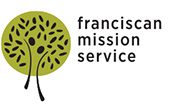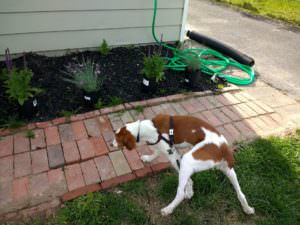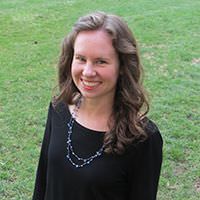Into the Vines
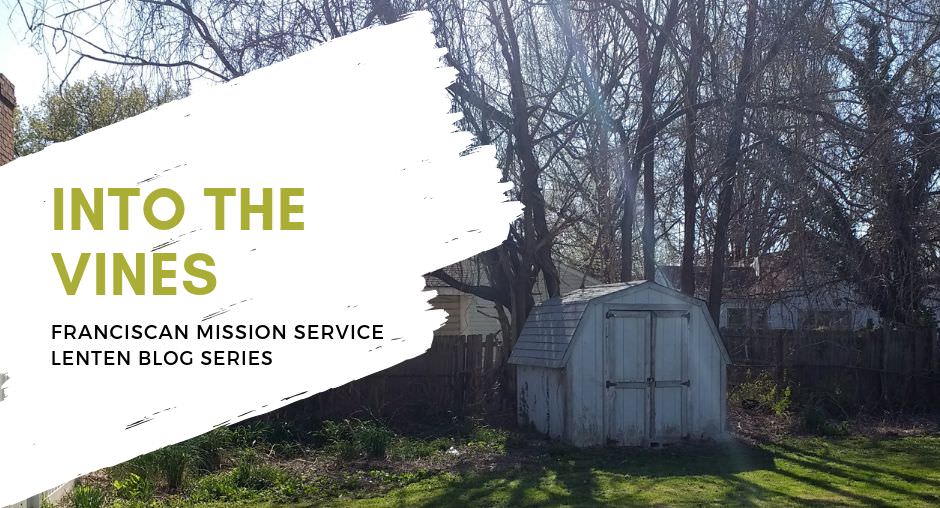
This Lent, we invite you to join the FMS family as we reflect on how nature has served as a backdrop to prayer and transformative encounters with God, just as the desert served as the context for Jesus’ 40 days of fasting and praying. No doubt, some stories will be of majestic views, peaceful retreats, and lush places of solitude. Others may be of strenuous but rewarding hikes, morning runs, or camping trips, but today we start with something much more ordinary: my backyard. It is not majestic or even particularly peaceful, but in the year since I purchased my house, my yard has tempered me with patience and a new understanding of persistence and trust. Read on to hear what I learned about prayer from going “into the vines.”
—
They told me not to worry about the garden. “It’s all about the house,” friends and family kept saying as I considered making the leap into home ownership and making an offer on a newly-renovated cape cod. “The garden’s not that big of a deal; you can always work on it later.”
I was skeptical. After all, I Iove to be outside, and the green space on my prospective property was not especially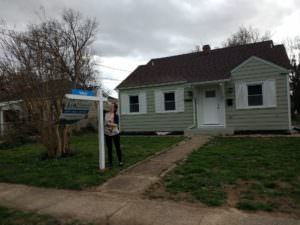 welcoming. Dead vines swung from the trees. Piles of leaves and mangled branches covered a quarter of the yard. Pieces of trash had collected against a rusted chain link fence. It was hard to imagine hosting summer barbeques in my yard or inviting friends’ children over the play. Nonetheless, I bought the house, increased my living space and adult responsibilities by a lot, and inherited a bunch of vines, dead leaves, and trash. With my name on the house deed, the house key in my hand, and my boxes packed, there was no turning back. But one question persisted: what to do about the garden?
welcoming. Dead vines swung from the trees. Piles of leaves and mangled branches covered a quarter of the yard. Pieces of trash had collected against a rusted chain link fence. It was hard to imagine hosting summer barbeques in my yard or inviting friends’ children over the play. Nonetheless, I bought the house, increased my living space and adult responsibilities by a lot, and inherited a bunch of vines, dead leaves, and trash. With my name on the house deed, the house key in my hand, and my boxes packed, there was no turning back. But one question persisted: what to do about the garden?
Within a few weeks of moving, a couple family members offered their help. We would have a work day. My uncles would bring a gas-powered tiller to dig up a vegetable patch and other tools to tackle the vines. The garden would then be ready to welcome spring, and I would look out my windows onto something beautiful, rather than something neglected.
The work day, however, did not start off very well. I realized something was wrong from the moment I put a shovel to the ground. Try as I might, the shovel wouldn’t go down. Something was stopping it– but what? Moving aside some dead leaves, I saw a tightly-wound network of thick vines, and further inspection revealed that the vines covered the entire yard. It was as if someone had laid down a mat of steel wool that not even the mechanical tiller could handle very well. Hours of work with my family did leave my yard looking better, but not by much, and I was left feeling overwhelmed. Reclaiming the green space was going to take way more work than I had imagined, or way more money than I was able to spend.
Nonetheless, I was undeterred and threw myself into the work of conquering the vines and removing the leaves. Sometimes, I felt like an archeologist as I unearthed items as varied as a deflated basketball, bones (hopefully, that a previous resident’s dog had chewed on), electronics parts, the packaging for a whoopee cushion, and the brick borders of old flower beds. Still, with the growing season in full swing, any work I did was like taking one step forward and two steps back, and so I inquired about a novel workaround: hiring goats. Known for eating almost anything in their path, goats are being rented more frequently by property owners and businesses to eat away invasive species and grass in areas that mowers can’t handle, such as on steep slopes or in wooded areas. A goat herd seemed like overkill for my small property, but I thought that one goat might do the trick.
Unfortunately, the woman from the goat farm told me that one goat would not work because goats need their herd. A goat all by itself would just stand in my yard and cry. That was sad news to me, but the goat owner was encouraging, and she said something like, “It may seem overwhelming, but just keep trying and you will see a difference. If you cut back each vine and paint poison onto each vine tip, the vines will die and you will have your yard back.”
And so that’s what I began to do. Cut, paint on poison. Wait till the vine rots, then pull it out. Repeat. And repeat. And repeat.
This work is tedious. This work is not fun. But it is the best way to go about things without resorting to chemical sprays that pollute the soil, and so I keep at it, cherishing the signs of new life that are slowly emerging from a yard less covered in vines.
As I tend to my yard, my thoughts often wander to God and I have come to believe that there are spiritual lessons to be learned from the vines, such as the value of slowing down, attending to the details, and persisting in prayer even when there is little movement or change. In addition, there is the value of trusting what Pierre Teilhard de Chardin called “the slow work of God.”
Sure, I would like my yard to be perfect right now, but God does not expect perfection from me right now, and so perhaps it’s not my place to expect it from the people—or places—around me. Stewarding my yard is an ongoing project, and for as long as it lasts I will cherish it as a reminder that stewarding my spirit is an ongoing project too, both within these 40 days of Lent and beyond.
Reflection Question: How can you be practice patience as a steward of creation?
Tagged in:
